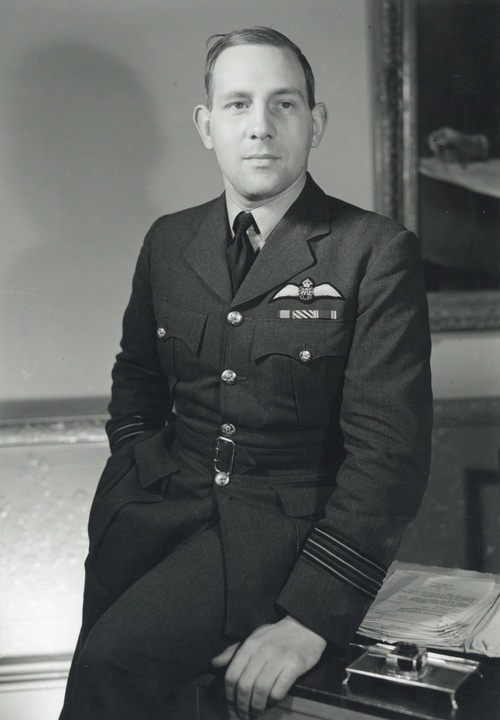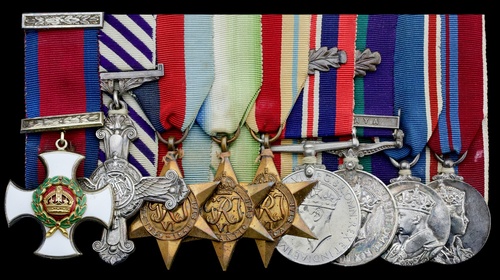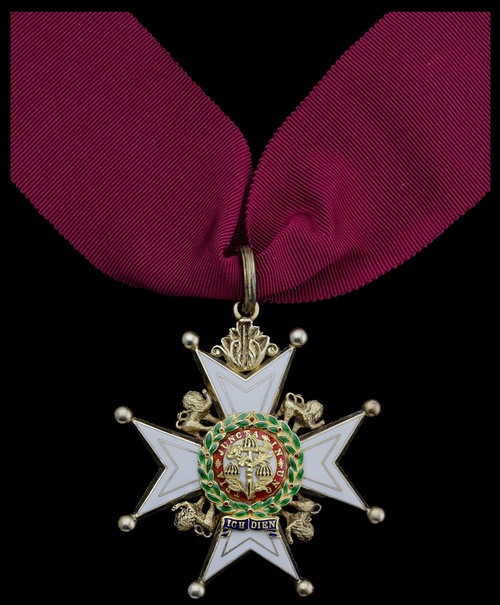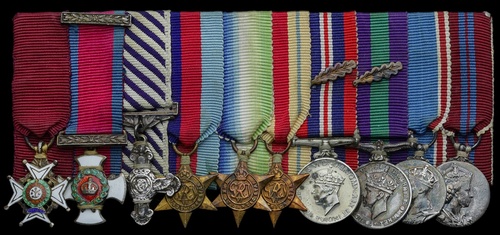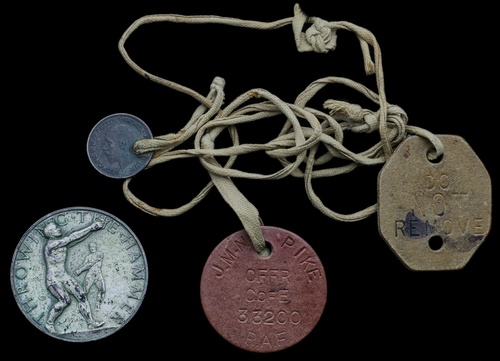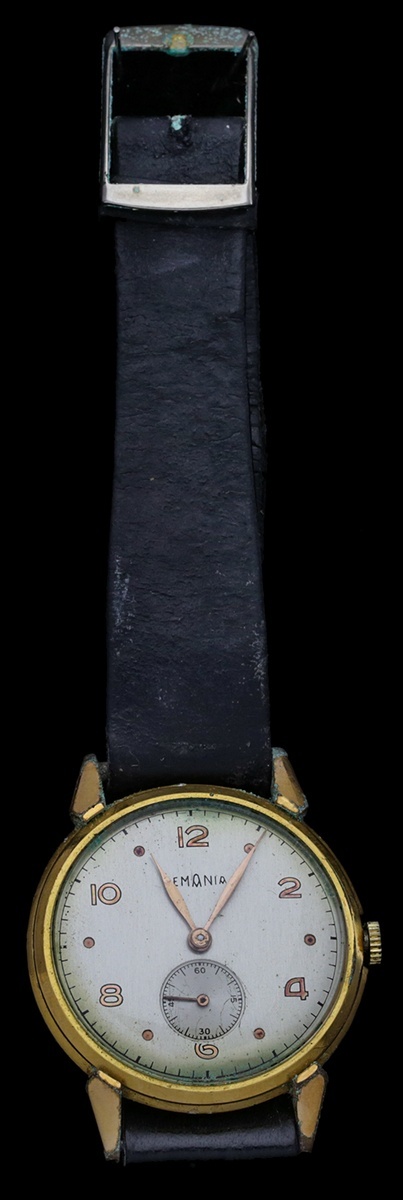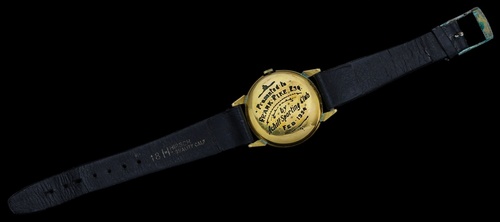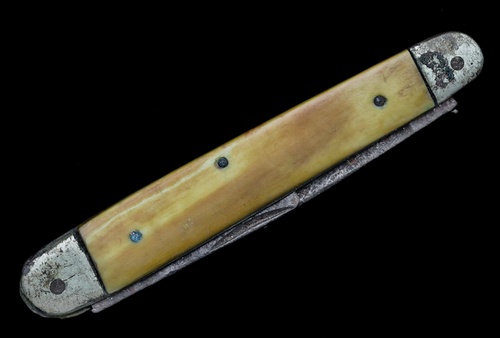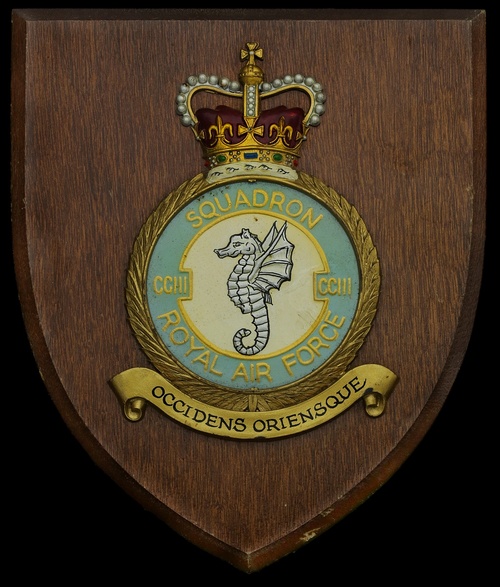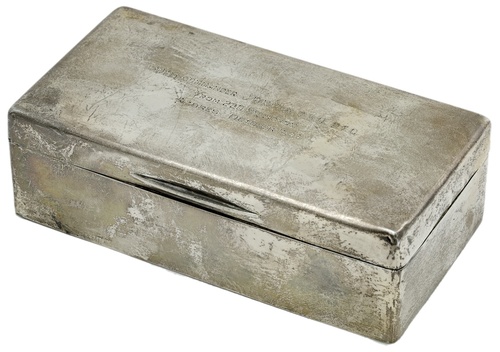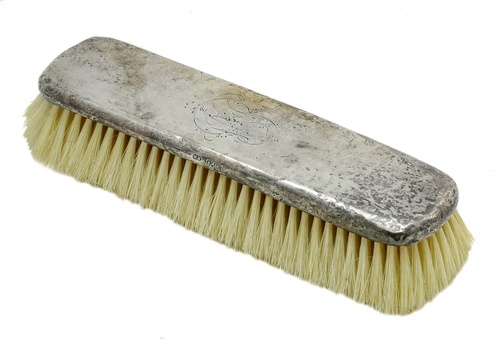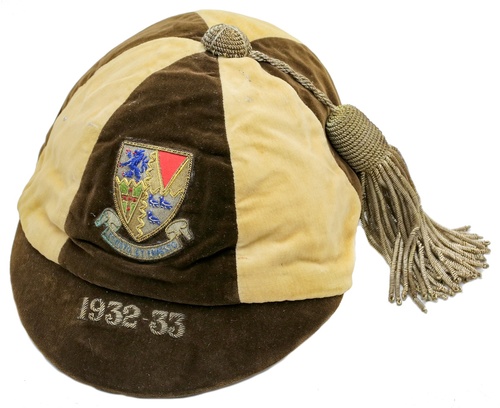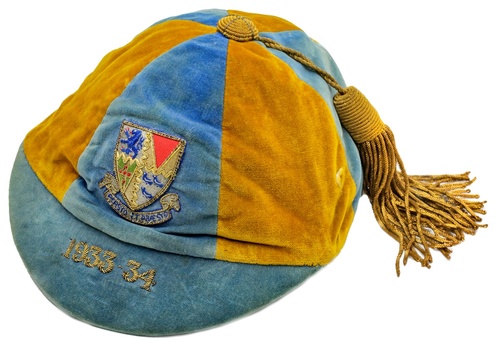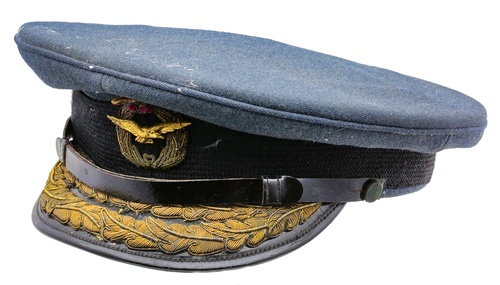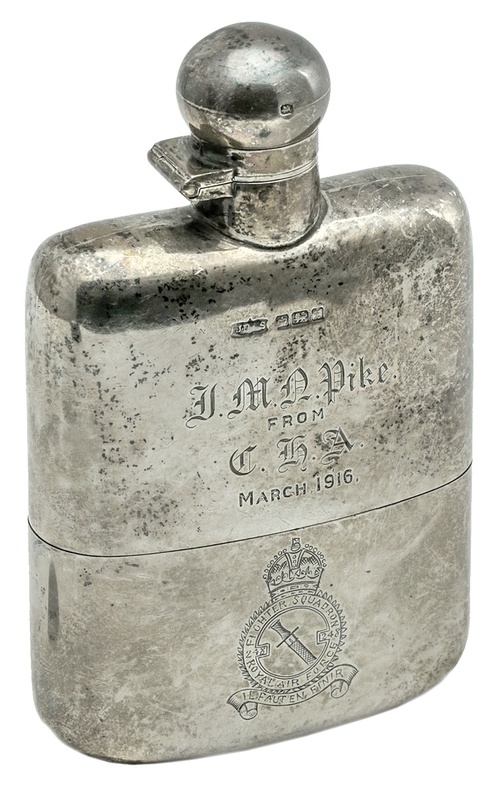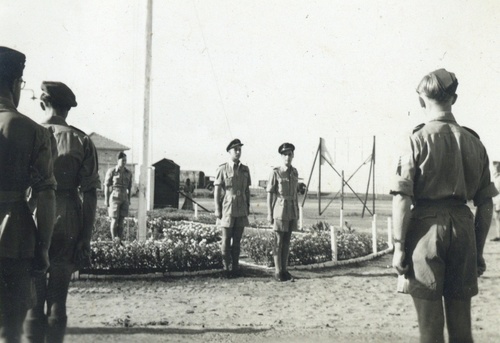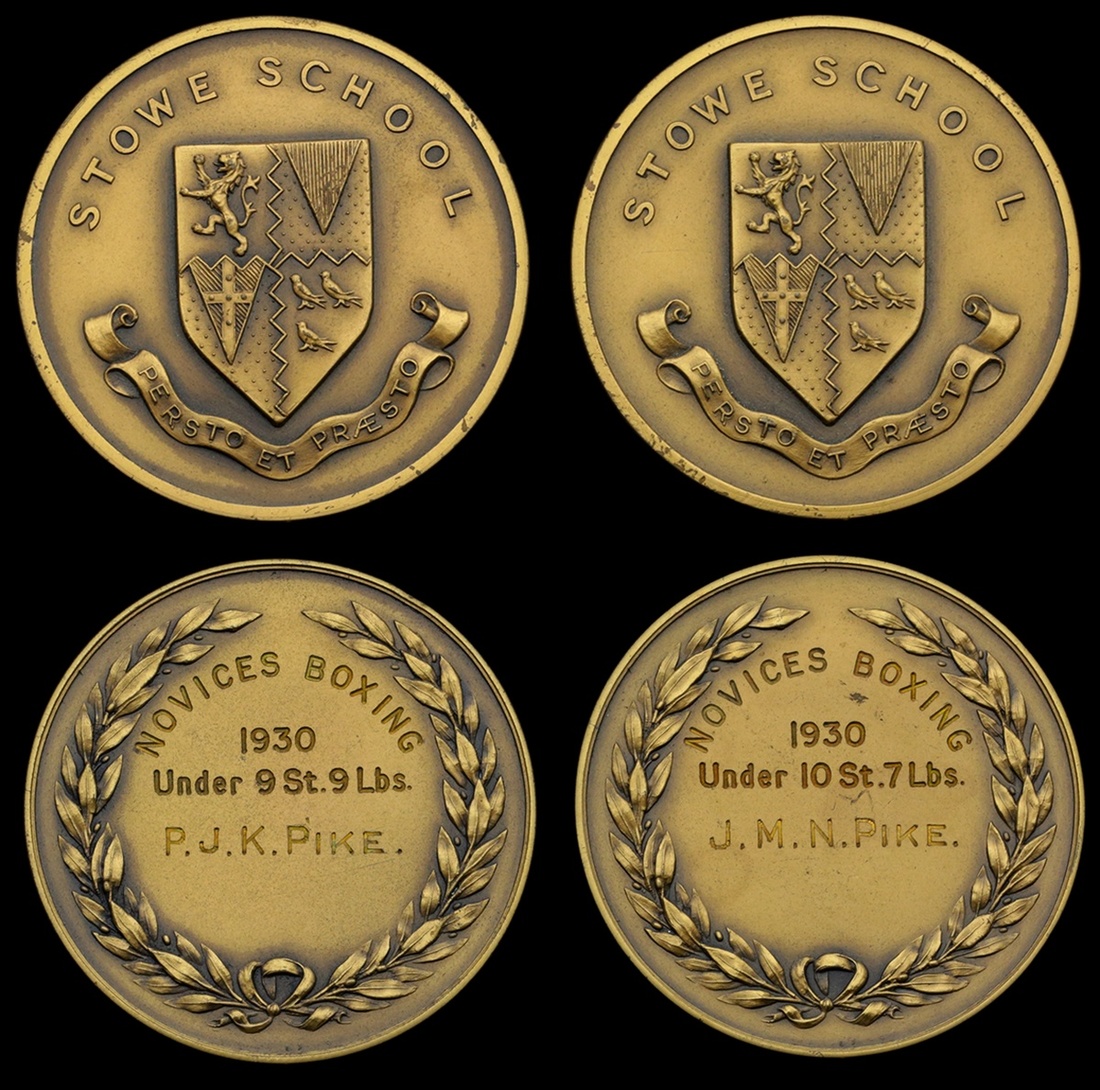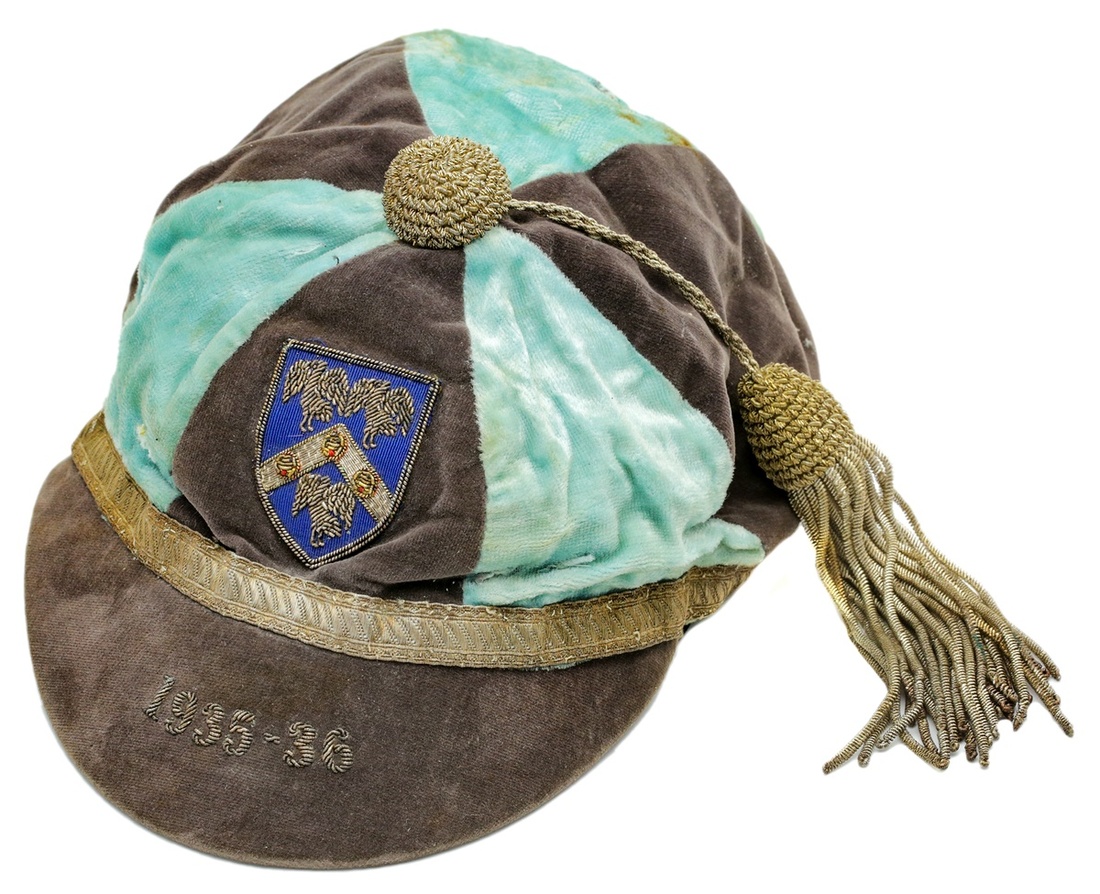Auction: 20001 - Orders, Decorations and Medals - conducted behind closed doors
Lot: 739
The rare and outstanding post-war C.B., Second World War Coastal Command operations D.S.O., D.F.C. group of nine awarded to Air Commodore J. M. N. 'Jimmie' Pike, Royal Air Force, a three-tour-pilot who somehow survived nearly 200 operational sorties
The first cadet at Cranwell to win both the Sword of Honour and the King's Medal, great things were expected of him as he embarked on his career in 1935, and nor did he disappoint: by the end of 1942 he had risen to squadron command and been twice decorated and twice mentioned in despatches, accolades achieved after what he described as many 'brushes with the angel of death'
He first came to prominence for a spate of operations in Blenheims and Beaufighters of No. 203 Squadron in 1940-41, not least a brace of low-level attacks on enemy airfields from one of which - yet again - his aircraft returned to base severely damaged
Awarded the D.F.C., he quickly returned to the fray in No. 236 Squadron, winning a "mention" for his gallant defence of our ships and Coastal Forces returning from the raid on St. Nazaire in March 1942
Then, as C.O. of No. 248 Squadron, he took his Beaufighters to Malta in August 1942 and had a lucky escape from 109s while defending the famous Operation "Pedestal" convoy; he also led a highly successful attack against enemy airfields in Sardinia and was awarded an immediate D.S.O.
And the post-war era brought him further honours, including a fourth "mention" for the Malaya operations, in which he had 'great fun' going on supply drops in Dakotas and mounting strikes against bandit areas in Beaufighters
Pike's hitherto unpublished account of his remarkable career - Brushes with the Angel of Death - is included and refers to at least three 'belly-landings' on account of flak damage. Probably his closest shave occurred during a sortie flown in the defence of R.A.F. Habbaniya in May 1941: on penetrating the left side of his cockpit, a bullet neatly carved a linear cut in the top of his flying helmet, tore the skin from his sculp and then exited right
The Most Honourable Order of the Bath, C.B. (Military) Companion's neck badge, silver-gilt and enamel, in its Collingwood, London case of issue; Distinguished Service Order, G.VI.R., the reverse of the suspension bar officially dated '1942'; Distinguished Flying Cross, G.VI.R., the reverse officially dated '1941'; 1939-45 Star; Atlantic Star; Africa Star; War Medal 1939-45, M.I.D. oak leaf; General Service 1918-62, 1 clasp, Malaya, M.I.D. oak leaf (Wg. Cdr. J. M. N. Pike, R.A.F.); Coronation 1937; Coronation 1953, mounted court-style as worn, very fine (9)
C.B. London Gazette 8 June 1963.
D.S.O. London Gazette 4 September 1942. The original recommendation - for an immediate award - states:
'This officer has always shown outstanding keenness tom engage the enemy and gallant leadership. On the ground and in the air he has been an inspiration to all. During the recent operation he has not spared himself at all in seeing that every detail was in order. This had resulted in the very fine work carried out by No. 248 Squadron. He personally led a very successful dusk attack on Sardinian aerodromes on the night of 11-12 August [1942] which resulted in a large number of enemy aircraft being destroyed and damaged in spite of heavy flak opposition. It was entirely due to his leadership and preparation before and that beforehand that such successful results were obtained. He also had the first sortie on convoy escort on the morning of the 13th, in which he carried on with his escort in spite of the presence of many Me. 109s, one of which attacked his aircraft.'
D.F.C. London Gazette 18 February 1941. The original recommendation states:
'During a period of four days in February 1941, this officer carried out two low-flying attacks against enemy aerodromes. On the first occasion, as he arrived over the aerodrome, three enemy fighters were taking off to intercept him but Squadron Leader Pike immediately dived on to the leading aircraft which he put out of action. He then carried out low-flying attacks on other aircraft on the ground and, although engaged by another fighter which was finally disabled, succeeded in setting fire to four and damaging a further four of the enemy's aircraft. Although his own aircraft was severely damaged, Squadron Leader Pike flew it back to base and landed safely without injury to his crew. On the second occasion, he set fire to four enemy bombers, photographed the result and returned to base by night. During the past seven months, Squadron Leader Pike has also carried out 29 anti-submarine patrols and 24 convoy escort patrols. He has displayed great courage and devotion to duty throughout.'
James Maitland Nicholson Pike was born on 8 February 1916, the son of Frank Pike of Glendarary, Achill Island, Co. Mayo, Ireland. He was educated at Stowe and thence the R.A.F. College, Cranwell, where he became the college's first cadet to win both the Sword of Honour and the King's Medal.
Opening shots: 203 Squadron
The advent of hostilities found Pike serving as a Flying Officer in flying boats of No. 203 Squadron in Aden. He would shortly be advanced to Flight Lieutenant and convert to Blenheims, in which capacity he first saw action against the Italians during Red Sea convoy patrols. A case in point was his run-in with a SM 79 in November 1940, when his guns jammed as he moved in for the kill and the enemy rear gunner got a round into his petrol tank. His ground crew subsequently retrieved the .5 bullet and he retained it as a souvenir.
But it was in February 1941, for two low-level attacks on Italian airfields, that he gained his D.F.C., bringing, as he did, his badly damaged Blenheim home after a return trip of 350 miles over mountainous territory. No. 203 went on to attack further targets, mounting a flak-riddled strike on Addis Ababa, in addition carrying out strafing sorties against enemy transport and communications.
Crete and Iraq
In April 1941, the Squadron was moved at haste to Crete:
'The air was thick with Ju. 87s and 109s and our convoys were happy to engage anything, including Blenheims circling as ordered with their wheels lowered. I lost one aircraft as a result of friendly fire and, after a dogfight with a Ju. 87, I returned to Crete with 15 bullet holes in my aircraft' (Pike's memoirs, refer).
He and his fellow pilots were next ordered to the relief of R.A.F. Habbaniya, which was under ground and air attack from the Iraqis. It was in the course of these operations in May, while circling over Rutba, that a bullet entered the left-hand side of Pike's cockpit, tearing the skin from his scalp. Indeed, in his own words, his 'Iraqi tour' was chock full of incidents:
'On 9 May we set off to bomb Mosul, where the Germans had arrived in small numbers, and found it a much more difficult proposition. I lost one aircraft to ground fire and my aircraft was hit seven times. We destroyed four aircraft on the ground with bombs and machine-gun fire. On 15 May we attacked aircraft on the ground at Erbil, destroying one with bombs and one with guns. Our guns then jammed. The aircraft was hit once by ground fire. On 16 May we did a night attack on Mosul. We set one aircraft on fire and damaged another three or four. We were chased off by Me. 109s, which we lost in the dark by turns at low-level. Between 20-27 May I was in hospital with sand fly fever - very unpleasant - and on 28 May we hit an Me. 110 on the ground at Kirkuk with bombs. On 30 May we left our aircraft at Habbaniya and flew to Egypt by transport aircraft.'
Pike - who had flown a total of 125 sorties - was suffering from 'filthy headaches' and deemed operationally worn out. He was embarked for the U.K.
236 Squadron - further flak - Operation "Chariot"
In November 1941, he reported to No. 236 Squadron at Cheriton Carew, near Tenby, and converted to Beaufighters. And it was thus equipped that he commenced a flurry of sorties out of St. Eval in the following month.
On 27 December 1941, Pike was ordered to carry out a solo recce of Brest at ground level. It was a perilous mission, peppered with intense flak. His recce over, he beat it for home, noting the position of an enemy flak ship in Douaverai Bay on his way. He was subsequently collared by the Senior Air Staff Officer (S.A.S.O.) of No. 19 Group, who ticked him off for not attacking the flak ship. Pike was mortified, explaining his orders were to get home with his recce intelligence and take no risks. Re-assigned to Brest the following day, he did indeed attack the offending flak ship on his way out, a successful attack but at the cost of a 20mm hit in his aircraft's hydraulics:
'The aircraft filled with smoke and I couldn't contact my Navigator. I decided he was dead and I'd better bale out. I was just about to do so when he appeared at my shoulder, and asked if I was alright. He had thought I was dead! He had put out the fire and the smoke cleared, so home we went and did a belly-landing at St. Eval, because we had no hydraulics.' (ibid)
But rather than receive due praise for his courage and skill, Pike was admonished by the Air Officer Commanding (A.O.C.) for risking his recce intelligence by attacking the flak ship. He referred the A.O.C. to 19 Group's S.A.S.O. Shortly afterwards, whilst instructing another pilot, Pike had a nasty prang. He was hospitalised for two months.
Back in harness by March 1942, by which stage 236 had moved to Wattisham, Suffolk, Pike attacked an armed trawler off Le Havre on 18 May. He scored many hits and set it ablaze, returning to base with holed port flap. Ten days later, and by now an Acting Wing Commander, he was again recommended for his gallantry, on this occasion for his valuable support in defending the ships and Coastal Forces of Operation "Chariot":
'On 28 March 1942, Wing Commander Pike was detailed to cover the withdrawal of a naval striking force which had attacked the docks at St. Nazaire. Soon after leaving base he engaged and damaged an enemy aircraft searching for our withdrawing forces; later he located four destroyers of the main naval force and four Motor Torpedo Boats. While escorting these vessels Wing Commander Pike sighted another enemy aircraft which he attacked and damaged. During this engagement his aircraft was hit and badly damaged but he continued his patrol, leaving only when shortage of petrol made this imperative. This officer, owing to his courage and fine fighting spirit, probably averted a concerted enemy air attack on our ships.'
In the event, he was mentioned in despatches (London Gazette 11 June 1942, refers).
248 Squadron - Malta strikes - Operation "Pedestal"
In May 1942, Pike assumed command of No. 248 Squadron - another Beaufighter unit - at Dyce. A few days later - on the 17th - the Squadron was scrambled south to participate in an attack on the Prinz Eugen off Lista. Pike led his formation against the destroyer escort:
'We took the leading destroyers and gave them a good strafing. In reply my aircraft got some shrapnel in the port airscrew, port engine, starboard wing and cockpit, including a small bit in my left arm, which I didn't discover until the following day!' (ibid)
In June, No. 248 departed for Sunburgh in the Shetlands, from whence Pike carried out an attack on an enemy M.V. off the Norwegian coast on the 17th. He left it with its waterline full of holes and a 'smoking bridge', his Beaufighter arriving back at base with shrapnel damage.
In the first week of August, Pike received orders to proceed to Malta via Gibraltar, where he and his pilots were quickly in action. As cited in the recommendation for his award of the D.S.O., he led a highly successful strike against the enemy airfields at Elmas and Decimomannu in Sardinia on the night of 11-12 August:
'I personally set on fire one aircraft, seriously damaged two and damaged several others and put one gun position out of action. The Squadron bag was ten on fire, 20 seriously damaged and others damaged. Despite quite a lot of flak, no-one was hit.' (ibid)
But Pike was not so fortunate the following day, when he was ordered to the defence of an important convoy. In fact the most important convoy of them all - Operation "Pedestal":
'Alas the only cruiser with R./T. had been damaged the day before so we got no directions at all. I watched in horror as a large M.V. full of petrol exploded and simply disappeared. The Spitfires then arrived and the Germans, stupidly, didn't attack again. Shortly afterwards I was attacked by Me. 109s, one of which was acting as 'bait' to allow the other to strike unseen. Fortunately my Navigator saw the other one and with a hairy turn I managed to evade him, although he put a bullet through my tail. Fortunately the Beaufighter is faster than the Me. 109 - although not as manoeuvrable - and I managed to escape. Another member of the Squadron was not so lucky.' (ibid)
Having then got a half-share in a Ju. 52 while attacking an enemy convoy off Corfu, Pike was ordered to the U.K. With a tally of 165 operational sorties to his name, his well-merited award of the D.S.O. was gazetted in the following month and he was also mentioned in despatches (London Gazette 1 January 1943, refers).
Third tour of operations
Rested back home, Pike attended Staff College and served as a staff officer at Coastal Command H.Q. But he was itching to get back on operations.
His ambition was achieved in January 1944, when he assumed command of No. 220 Squadron in the Azores. Equipped with the American B 17s - flying fortresses - the unit carried out a steady agenda of anti-U-Boat patrols, Pike raising his tally of operational sorties to the 189-mark.
His final wartime appointment was on the Directing Staff of the R.A.F. Staff College and he received a third "mention" (London Gazette 1 January 1946, refers).
Post-war
The post-war era witnessed Pike's advancement to Group Captain in July 1955 and to Air Commodore in January 1961 and he was awarded the C.B. for his tour as Air Officer Commanding R.A.F. Gibraltar 1961-62.
He also added yet another "mention" to his accolades for his services as C.O. of R.A.F. Kuala Lumpur in Malaya (London Gazette 11 August 1950):
'I had great fun going on supply drops in Dakotas and strikes against bandit areas in Beaufighters.' (ibid)
Pike's final appointments were as Air Commodore Intelligence at the Ministry of Defence (MoD) and Director of Security R.A.F., following which he was placed on the Retired List in May 1969. But he remained employed by the MoD in Naval Intelligence until 1978.
The Air Commodore - who possessed 'a wicked sense of humour' - was an accomplished fisherman, shot and yachtsman. He died in March 1999.
Sold with a selection of related artefacts and documentation, comprising:
(i)
The recipient's hitherto unpublished account of his remarkable career - Brushes with the Angel of Death; typed manuscript, 12pp.
(ii)
Coronation Medal 1953 bestowal document in the name of 'Wing Commander J. M. N. Pike, D.S.O., D.F.C.'; together with his copy of the Statutes of the Most Honourable Order of the Bath.
(iii)
Two identity tags in the name of 'J. M. N. Pike, Offr. C. of E. 332200 R.A.F.'
(iv)
His R.A.F. Officer's peaked cap, by Gieves Ltd.
(v)
Stowe School sports caps (3), for 1932-33, by Thomas Plant & Co., Cheltenham, with name tag sewn in; 1933-34, by Thomas Plant & Co., Cheltenham, with name in ink on tag; and 1935-36, by Burberry's.
(vi)
Stowe School boxing medals (2), both for 1930, together with an R.A.F. Command Far East Hammer Throw medal, inscribed 'W./C. J. M. N. Pike, 1949'.
(vii)
A hallmarked silver cigarette box, with inscription to lid, 'To Wing Commander J. M. N. Pike, D.S.O., D.F.C. From 220 Squadron. Azores. October 1944'.
(viii)
A hallmarked silver hip-flask with inscription, 'J. M. N. Pike from C. H. A. March 1916' and later addition of engraved No. 249 Squadron crest to lower portion of the flask.
(ix)
Lemania wristwatch with inscription to reverse, 'Presented to Frank Pike Esp. by Achill Sporting Club Feb. 54.'
(x)
A No. 203 Squadron wall plaque.
Subject to 20% VAT on Buyer’s Premium. For more information please view Terms and Conditions for Buyers.
Sold for
£7,500
Starting price
£3500

